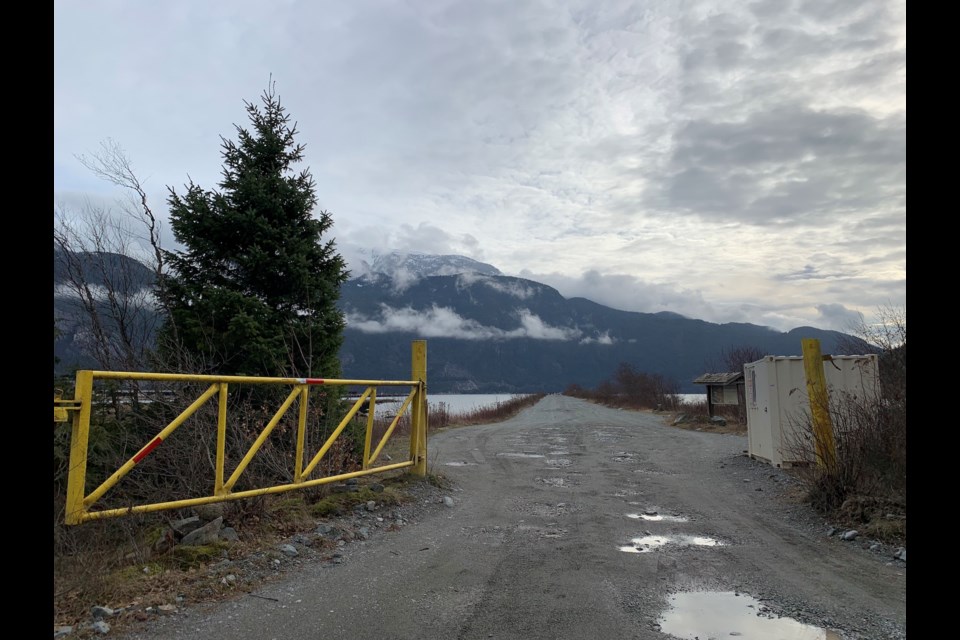Crews are set to remove an additional 550 metres of the Squamish Spit this month.
The Squamish River Watershed Society has told The Squamish Chief that it has received all the necessary permitting to begin the second phase of the Central Estuary Restoration Project, or CERP.
The project’s goal is to dismantle the Spit so that premature salmon can access the Estuary, where they can grow strong enough before venturing into the deep waters of Howe Sound.
Up until the removal of the berm, the Spit blocked access to the Estuary, funnelling fingerlings out into Howe Sound before they could become strong enough to survive those harsher conditions.
The Spit was built in the 1970s for industry, and, since then, salmon numbers have significantly diminished. It’s the hope of conservationists that removing the structure will contribute to the recovery of the fish.
So far, conservationists have removed 300 metres of the Spit, and this next phase will build on that work.
On Feb. 10, a spokesperson for the Squamish River Watershed Society, which is spearheading this initiative, told The Squamish Chief that if all goes according to plan, this next phase of removal will start in just over a week.
Patricia Heintzman said that over the next couple of days, crews will start grading the road leading to the removal site to make it accessible to heavy machinery. The society will also be meeting with other affected parties, such as Squamish Terminals.
“The plan is to take out the remaining 550 metres to the yellow gate,” said Heintzman.
Under their permit, they are allowed to work until mid-May, but they hope to finish the work before that.
One major concern that has been dogging the project has been whether the removal of the Spit will result in sediment build-up at Squamish Terminals.
One theory has been that the berm has been shielding the port from the sediment building up at the end of the river. This has been observed closely by both the CERP team and the port.
Back in November, the terminals noted initial findings from one of its studies found “significant increase in sedimentation rates in the West Berth” of the port.
This has been a cause for concern, as Squamish Terminals does not want to incur the significant costs that would come with additional dredging.
At the moment, both CERP and terminals continue closely monitoring the situation.
When speaking about the latest phase of the Spit removal, Squamish Terminals’ new general manager, Nick Knight, issued a written statement to The Squamish Chief.
“The build-up of any sediment in our navigation channel remains a concern for Squamish Terminals to ensure ongoing safety of navigation,” wrote Knight. “We continue work with all parties and monitor as Phase 2 of the Spit removal project begins.”
On the other hand, Heintzman said that there is a solution.
She said the Fisheries and Oceans Canada, or DFO, is offering to offset any negative impacts the project has on the port.
“They're basically the guarantor, if you want to call it that,” said Heintzman. “So, if there's any negative impact on the terminals, DFO will figure out what it is and how to mitigate.”
The Squamish Chief asked Fisheries and Oceans to confirm this.
In response, DFO sent a written statement.
"During permitting for the second phase of this project, Fisheries and Oceans (DFO) committed to ensuring monitoring of the project specifically in relation to sedimentation that could occur," reads the message from spokesperson Dan Bate.
"DFO did not specifically commit to dredge sediment build-up, but rather to work with Transport Canada and the Province of B.C. to identify mitigation to address any detrimental sedimentation effects resulting from the project. It should be noted that DFO’s assessments have shown that the likelihood of this occurrence is low."
The Sḵwx̱wú7mesh Úxwumixw (Squamish Nation) noted that the next phase of removal is a continuation of the plan, but declined to offer any further remarks.
Like during the previous phase of removal, people will still have access to the Estuary trails, but the will not be allowed on the area of the Spit that’s being dismantled, Heintzman said.




